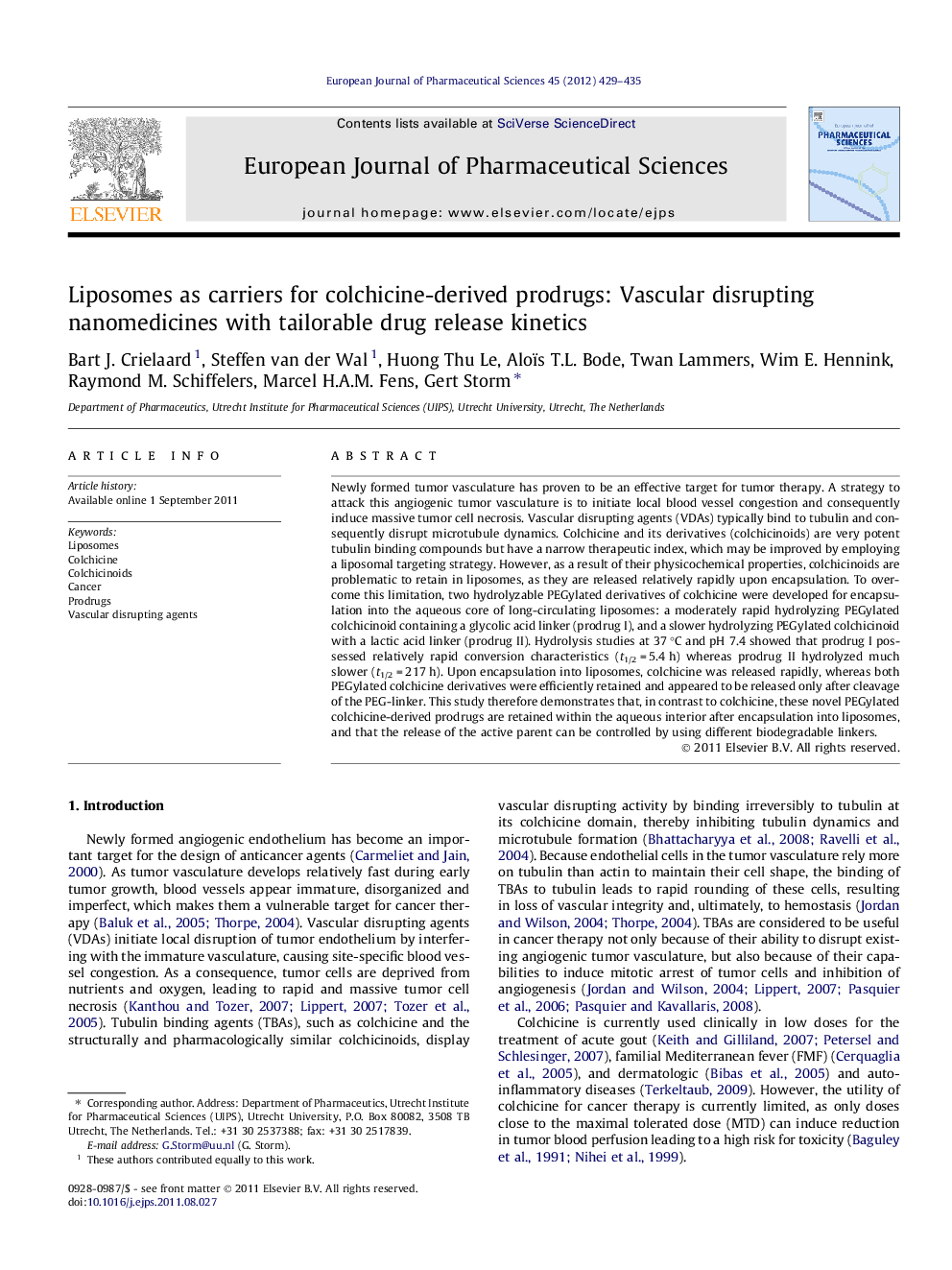| کد مقاله | کد نشریه | سال انتشار | مقاله انگلیسی | نسخه تمام متن |
|---|---|---|---|---|
| 2481450 | 1556223 | 2012 | 7 صفحه PDF | دانلود رایگان |

Newly formed tumor vasculature has proven to be an effective target for tumor therapy. A strategy to attack this angiogenic tumor vasculature is to initiate local blood vessel congestion and consequently induce massive tumor cell necrosis. Vascular disrupting agents (VDAs) typically bind to tubulin and consequently disrupt microtubule dynamics. Colchicine and its derivatives (colchicinoids) are very potent tubulin binding compounds but have a narrow therapeutic index, which may be improved by employing a liposomal targeting strategy. However, as a result of their physicochemical properties, colchicinoids are problematic to retain in liposomes, as they are released relatively rapidly upon encapsulation. To overcome this limitation, two hydrolyzable PEGylated derivatives of colchicine were developed for encapsulation into the aqueous core of long-circulating liposomes: a moderately rapid hydrolyzing PEGylated colchicinoid containing a glycolic acid linker (prodrug I), and a slower hydrolyzing PEGylated colchicinoid with a lactic acid linker (prodrug II). Hydrolysis studies at 37 °C and pH 7.4 showed that prodrug I possessed relatively rapid conversion characteristics (t1/2 = 5.4 h) whereas prodrug II hydrolyzed much slower (t1/2 = 217 h). Upon encapsulation into liposomes, colchicine was released rapidly, whereas both PEGylated colchicine derivatives were efficiently retained and appeared to be released only after cleavage of the PEG-linker. This study therefore demonstrates that, in contrast to colchicine, these novel PEGylated colchicine-derived prodrugs are retained within the aqueous interior after encapsulation into liposomes, and that the release of the active parent can be controlled by using different biodegradable linkers.
Figure optionsDownload as PowerPoint slide
Journal: European Journal of Pharmaceutical Sciences - Volume 45, Issue 4, 12 March 2012, Pages 429–435